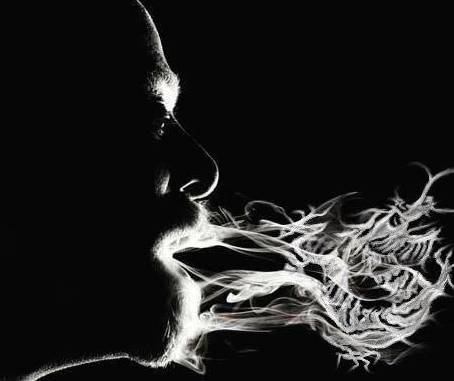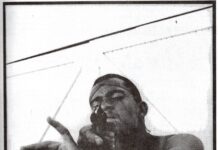
MARK CROMER learns that fighting for a friend’s freedom isn’t all that it is cracked up to be
Saving a friend’s life isn’t as exciting as it’s been cracked up to be. In fact, it can be a down-and-dirty, no-thrills, real pain in the ass.
I know this because several weeks ago two buddies and I mounted a frenzied effort to keep a friend of ours among the living. And we succeeded.
Granted, we didn’t pull him off the train tracks at the last second, or grab him as he was about to jump from 20 stories up. It was nothing so glorious as diving into shark-infested waters to rescue him from a riptide that was pulling him out to oblivion. And we didn’t get a police bullhorn to talk him into putting down a gun.
But for three long days we did our best to get a big, bad monkey off his back.
See, our buddy was shooting heroin into his arms (and numerous other places once the veins there collapsed) to the tune of about $50 a day. He was stealing from everyone around him. He was lying to people who were once his most trusted confidants. By the end-puffy, pale and fighting numerous infections-he was literally rotting away in front of our eyes.
No, none of these things happened overnight. As with most junkies, I suppose, his was a gradual deterioration, one that he was able to conceal for a time. Red flags started popping up months ago, but I’m not sure any of his friends knew how to deal with it. I know I didn’t.
After all, this was a top graduate from Pasadena Art Center. A brilliant young photographer. He was one of us, for Christ’s sake! This was a guy who I quaffed beers and smoked doobs with, making fun of those scare-films they used to screen for us during junior high in the 1970s. Those latter-day “Reefer Madness” flicks that said pot was just a stepping stone to harder drugs like crack and heroin.
“Who are those morons trying to kid?” we’d laugh to ourselves. We were middle-class college students who knew better than to start sticking needles in our arms. We even joked about our mutual fear of needles and the sight of our own blood.
I guess it just goes to show some fears can be overcome.
Any doubts we had about what he was sliding into evaporated last September, when he was arrested for felony possession of a controlled substance. It seems he scored his fix that day from a dealer who was under surveillance. It was four days in the hole for our buddy, and plenty of time for soul-searching among his friends.
But the consensus seemed to be this was the wake-up call he needed. We thought four days in a hellish L.A. County jail-where he was so frightened he lied and told them he was gay so he would be segregated from the general population-would scare anyone sober.
Upon release it seemed he was trying to get a fresh start on life. He moved in with two friends, got a new job and vowed to put his life together. He set goals and objectives for himself. And we believed him.
So perhaps none of us wanted to admit he was back on the junk, just a little over a month later. He sure didn’t. There was a long answer to every question we asked. Questions like, “You’re working six days a week, pay no rent and have very few bills, so why are you always broke and asking for money?”
He always had an answer. Rambling, mystery-riddled explanations, but always an answer. As the days went on, his appearances among our circle became less frequent. He flitted about like a little ghost who never stayed for long. He always had somewhere to get to. None of us knew where, and most of us probably didn’t want to.
I decided to end my detachment the night I came home to find my girlfriend standing in the living room, visibly shaken. Our friend had stopped by the house only a few moments earlier.
“He looked dead,” she said. “He’s turning gray.”
The following night, after mulling our options, his two roommates and I surrounded him on the back porch of their home. Chain-smoking and guzzling a 40-ounce malt liquor, he bore a striking resemblance to Dustin Hoffman’s character Ratso in “Midnight Cowboy.”
We told him he could either come with us, and do exactly what we told him, or he could load what was left of his belongings into what was left of his truck and leave for good. If he came with us, the first stop would be the emergency room. If he left and then tried to come back, we’d call the police.
He started to whine. Then plead. A moment of righteous indignation was quickly followed by begging. We repeated his choice and told him the clock was ticking. What was it going to be?
He slumped against the wall and, bathed in the surreal yellow glow of a bug light, started to cry.
Down at the emergency room, the doctor examined him and determined he wasn’t going to die that night. He told us to bring him back the following morning for outpatient social services for referrals.
The next two days was a frustrating odyssey through a maze of referrals by social workers who seemed at times as lost in “the system” as we were. It was a cold, hard crash course in what many middle-class people optimistically believe is a “safety net.” In short, it’s not there.
There were plenty of numbers to call, plenty of people to talk to, from Pasadena to Bloomington, from Norwalk to Pomona. Shelters, crisis units, support groups, rehab hospitals, clean-living homes and on and on and on.
But when it came down to finding a single vacant bed in any facility that would offer him the safe, clean and supportive environment he would need to get straight, the answer was always the same: “Sorry, we don’t have anything available right now. Try back later.”
A counselor at one “gatekeeper” facility, which evaluates you and refers you to a drug treatment center (or you don’t get in), actually told us that our buddy would have to continue using until they found him a bed, because they don’t take people who are already clean. It was an absolutely perverse reality.
To get our buddy arrested would have taken but a phone call. But to get him help, save his life and start turning him back into a productive, law-abiding citizen-well, take a number and get in line. It took three days.
Weeks later, clinical worker Meagan Kramer would tell me that getting him into a program even that quickly “was incredibly fast. Most of the time I expect a three- to five-week wait for a county-funded bed.”
Kramer, who handles drug treatment referrals for Pomona Valley Hospital Medical Center, said the delay can be costly. “If they are ready to go into treatment at that moment, then we need to seize the moment. Five weeks down the road they could very possibly be dead.”
The three of us took turns keeping an eye on our buddy as we waited for a bed to open up. We stripped him of his keys and tried to make sure he didn’t go anywhere.
I took his fix kit-needles, cotton, spoon and other accessories-down to the local police station for safe disposal. Apparently not convinced that I really was trying to safely dispose of contaminated needles, which could prove deadly if left in a trash can for kids to find, the cops decided to grill me: “OK, so what are you really doing with these . . . ?”
As the hours ticked by, our friend was getting sicker. Sweating, puking, shivering and generally going into cold-turkey withdrawal. And like a junkie always does, he was constantly plotting a way out of his mess short of actually having to kick under supervision. At one point, after retching his guts up, he turned to us and said, “If you guys just let me ride it out here, I’ll be fine . . . really.”
As his third full day without a fix set in, looking like he’d been hit by a streetcar, our buddy ambled into an inpatient detox center in Bloomington. They took him only after we dropped him off there the night before and he pleaded to be let in. Apparently this sign of commitment moved one of the counselors there to make room for him.
That was several weeks ago. After a week at the center in Bloomington, our friend transferred to an inpatient center in Santa Monica, where he has remained clean and sober.
When my two friends and I get together these days over a couple of beers, the conversation occasionally drifts over to our buddy. None of us has talked to him since he checked in to the place in Bloomington. And we don’t expect he’ll be calling any time soon. He burned more bridges and scorched more earth than General Sherman and Joe Stalin combined.
One of his former roommates is still getting checks back in the mail that our buddy forged to himself and cashed. The other one is trying to figure out how to cover the hundreds of dollars spent on his credit card, which our buddy stole.
It seems as if every new day brings some new revelation, some discovery of a little memento our junkie friend left behind.
But we have no regrets.
We know that the shivering, pathetic, conniving little smack fiend who ripped us off and hurt a lot of people was not, in fact, the guy we knew and loved. The guy we knew and loved is the friend we fought so hard to save. And he’ll do the right thing.
He’ll get clean, stay clean, get the help he needs and then start paying people back.
It’s a moment we’ll be waiting for.
This column was first published in the Los Angeles Times










